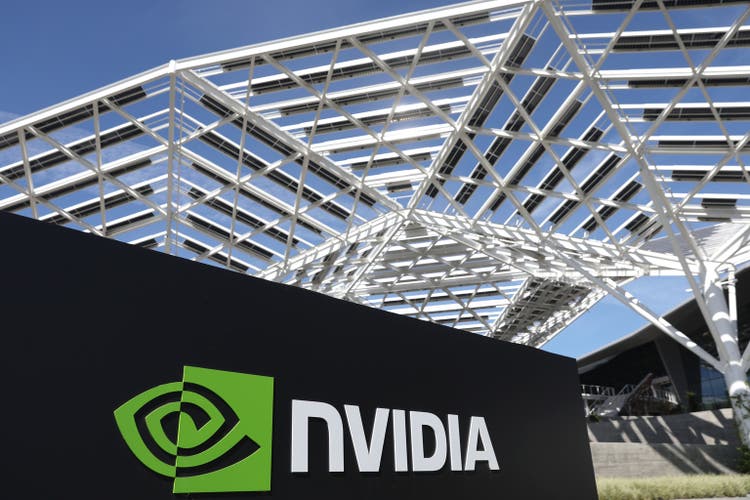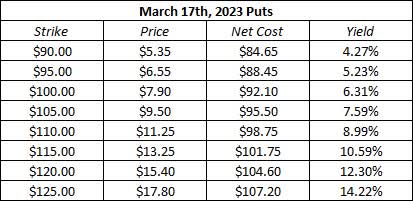Justin Sullivan/Getty Images News
Back in August, I cautioned investors that chip giant NVIDIA (NASDAQ:NVDA) might be about to warn the Street again. It appeared that we had seen a top in the company’s revenue cycle, and history suggested that analyst estimates were way too high. Since then, the company has warned twice, sending the stock down more than 31%, but it may not quite be the time to buy just yet.
In that article, I mentioned one Street analyst whose earnings preview said the company could guide a bit lower than consensus. It turned out he was actually too positive, as NVIDIA’s guidance for $5.9 billion in fiscal Q3 revenues was below the bottom of his $6.0 to $6.5 billion forecast range and just over a billion dollars under the overall Street average estimate. As a result, we’ve seen analyst estimates take another leg lower, continuing a trend that’s been seen for months now. The table below shows where the Street averages for this fiscal quarter (October 2022) stand, along with estimates through the end of the 2024 fiscal year.
Average Analyst Revenue Estimates (Seeking Alpha)
As a reminder, fiscal Q3 and Q4 growth percentages for next year’s Q3 and Q4 are based on the current estimates for this year. Thus, those 37% plus figures for growth seem really great, but those numbers are only there because this year’s expectations have come down more significantly. In total, this six-quarter stretch has seen its total revenue estimate come down from $58.90 billion to $42.92 billion in the past four months.
That drop would normally seem like a dramatic decline for a company of this size. Of course, as I detailed previously, the last cycle for NVIDIA saw revenue growth go from 66% at the peak to a 31% decline at the bottom. The recent cycle high this time around was 84% growth, and we just saw the July quarter come in with a 3% increase. The last downcycle saw four quarters where revenues were down over their prior year counterparts, but current expectations only call for that to happen three times during this cycle.
For the current quarter, management has called for gaming and professional visualization revenues to decline sequentially. PC and channel partners are reducing inventory to align with demand trends and next-generation product launches. There also has been a headwind from the dramatic pullback in cryptocurrencies. After the quarterly warning, another problem was detailed with the US government planning to increase semiconductor export restrictions, which could pressure NVIDIA revenues by a few hundred million per quarter.
It’s hard to recommend this stock currently just because I don’t think analyst estimates have bottomed quite yet. For the January 2024 period, for example, at least one analyst is calling for nearly $10.5 billion in revenue, almost $2 billion ahead of the overall average. I’d be a lot happier if some of these seemingly high estimates come down, to where expectations for the back half of next year come down to around say $16 billion in total.
It’s been a very tough year for shares of NVIDIA, and overall market weakness certainly hasn’t helped. The stock hit a new 52-week low late last week, and the technical setup isn’t great. The 50-day moving average is nearly $40 higher currently but declining by the day, which could provide resistance in the coming weeks. While the average Street price target of $206 implies major upside from current levels, just remember that this number was over $340 in early March, and look where it is now. I think we still have another quarter or two of price target adjustments as more estimates are trimmed so that Street average could easily come down towards $175.
I’m sure there are investors out there that would love to be in this name but are afraid we could see the stock head further lower should this market rout continue. You could potentially buy over time in that case, averaging lower if shares do decline. However, one possible idea might be to sell below current market price puts. I looked at March of next year, for instance, with the table below showing examples of current put strikes.
Potential Put Sale Examples (Yahoo! Finance)
Should you sell the $110 put, for example, and the option buyer exercise, your net cost (before commissions and any other expenses) would be under $100 a share. Given that shares closed Friday at $125, some investors might love that opportunity. At the same time, if shares don’t dip below that $110 level, you would pocket more than $11 over this time, yielding roughly 9%, whereas a 6-month Treasury bond only yields 3.89% currently. Should shares surge from here, you wouldn’t participate in the upside, but you’d still pocket the premium and make a pretty good yield in less than half a year.
With NVIDIA guiding lower than expected last month and then warning about China restrictions, shares have fallen more than 31% since my previous article. While analyst estimates have dropped as you might expect, they probably haven’t bottomed quite yet. Investors might warm up to the stock as we get closer to a revenue growth return, but that’s still a few quarters away. Perhaps the best strategy currently would be to sell puts a bit below where we are now, where you either get in at a much better price or pocket a nice yield until that growth scenario returns.


Be the first to comment